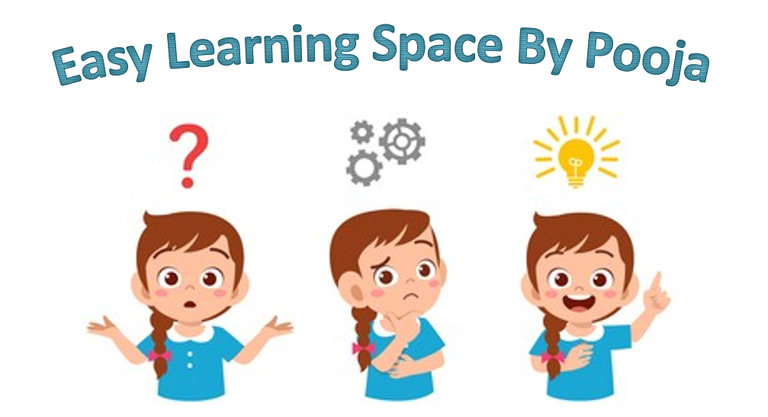Hyperactivity and ADHD
What is hyperactivity in kids? Is there any difference between hyperactivity and ADHD
Pooja
11/15/20223 min read
Please note, I am writing this blog on the basis of my experience and observation with my son and as a teacher who has in and out experience with toddlers. This is not a medical analysis, hence if you relate to this article, kindly consult a professional for further analysis
Hyperactive, probably the most overused in my life in the past eight years. Everyone I meet, everywhere I go, this term is synonymous with my son. Yes, absolutely no doubt he is a very hyperactive kid, who is not? Children are bustling with energy and our compact/apartment style homes do very little to channelize their energy. Children thrive on junk and processed foods which make it even worst. Hyperactivity is the most common issue faced by parents today.
ADHD also known as "attention deficit hyperactivity disorder" is a diagnosis often detected in childhood and most of the times translates into adulthood too if it goes undetected during the early childhood days of the child. These two terms are inter-related. Sometimes go hand-in-hand too. Having said that, there is also a lot of difference between these two terms.
Hyperactivity in children can be of two types: 1. Age related hyperactivity
Hyperactive but can make excellent eye contact, well developed vocabulary.
Children who have excellent eye contact with not only family members but also with everyone.
Can engage in conversations, have relatively decent social skills, very curious and asks a lot of questions.
Can be adamant, rebellious but agreeable.
This is a phase among children aged 4-7 and will eventually fade. This type of hyperactivity is not much of a concern but certainly a difficult phase for parents. A lot of patience has to be endured by parents in understanding children. Anger and stress which parents carry will eventually pass on to children and they become even more rebellious.
Hyperactivty with delayed speech
Delayed speech development
Poor eye contact
Mostly irritated and tantrum issues
Crying uncontrollably
Screaming and feels frustrated
Struggles to make friends and feels difficult to be in a social gathering.
This kind of hyperactivity requires professional help. You may have to refer a Pediatric neuropsychologist more than general pediatricians. Taking the help of subject matter expert is an added bonus
Hyperactivity differs from child to child. It is a vast spectrum, and it is only you that can help your little one. Please do not listen to "Boys will be like this", "Oh the father/mother of the child was exactly like this during his/her childhood days". We live in 2022 hence this kind of preconceived notions does not make sense anymore.
It is learnt that if the issue of hyperactivity if ignored during the early stages, might translate into adulthood leading to several issues in adults like depression, mental health complications, inability to take decisions, fickle minded mentality and underconfident adults. Since we have access to so much information and facilities it is our duty to make utmost use of them.
As parents we have to be more open and understanding towards the struggles of our children. We need to accept the situation and look for solutions. Connect with like-minded people who are also sailing in similar boat in the journey of parenting.
Some activities that have helped my son to manage hyperactivity are
Sorting: Give your children all kinds of grains/lentils of different colours, sizes and shapes. Now if your child is below 4 years of age, kindly give bigger grains and children above can sort smaller grains. This helps children to concentrate and focus, improves their eye-hand coordination. One of the best activities to improve their fine motor skills as well.
Drain physical energy : Get them to do a structured physical activity! Not just a random play but a structured play. For example, putting the basketball inside the basket, running for 30 seconds then 5 frog jumps and ending with a rabbit hop. This can be repeated for 3 rounds. hop, skip, jump and stop for 10 rounds. Something that is structured and has rules to follow. These kids struggle to follow rules and instructions.
Colouring inside the drawing: Ensure that they colour well within the picture. It is hard at first, second third may 10 attempts, give them repeated instructions and model it by doing it yourself. Make it fun by having competition between you and your child
Never forget to appreciate and reward your child. The child deserves all kinds of motivation and positive approach. Give them small tokens of appreciation which will motivate them to do better.
In the coming I will be meeting a top pediatric neuropsychologist in Bangalore, if you have any questions share in the feedback form I will request for answers. In fact I would want to interview him, hence your questions would help.
"If you have told a child thousand times and he still does not understand, then it is not the child who is a slow learner, but you are." - Walter Barbee
Address
Pooja
Bangalore
Contacts
easylearningspacebypooja@gmail.com
Subscribe to our newsletter
This blog is for educational purpose only
All the information on this website – www.easylearningspace.com – is published in good faith and for general educational and informational purposes only. I aim to provide helpful teaching tips and resources, but I make no warranties about the completeness, reliability, and accuracy of this information.
Any action you take upon the information you find on this website is strictly at your own risk. I will not be liable for any losses
